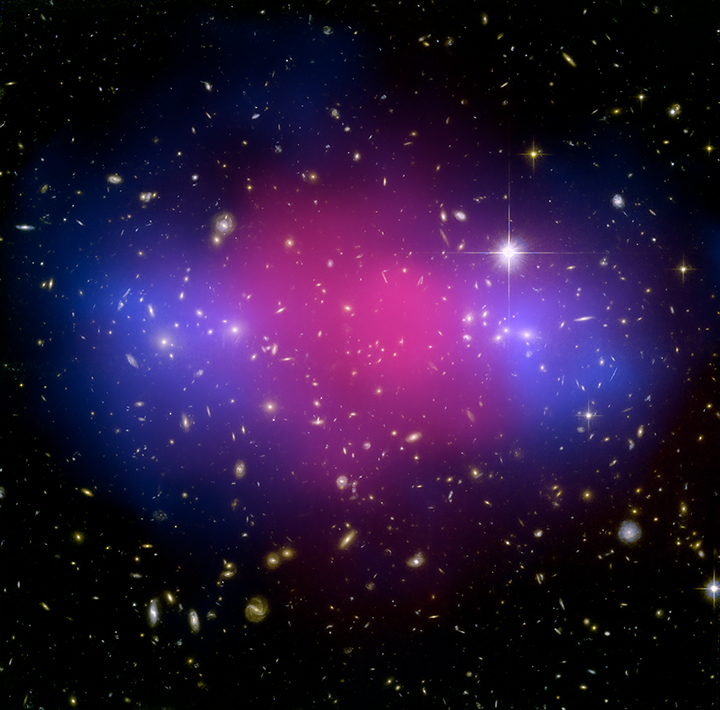
 Credit: X-ray(NASA/CXC/Stanford/S.Allen); Optical/Lensing(NASA/STScI/UC Santa Barbara/M.Bradac)
Credit: X-ray(NASA/CXC/Stanford/S.Allen); Optical/Lensing(NASA/STScI/UC Santa Barbara/M.Bradac)
Fasten Your Seatbelts
Simple experiments are the best, especially when performed on a cosmic scale. A few years ago, astronomers posited a seemingly impossible question: Does dark matter, that mysterious stuff that makes up about one fourth of the present-day Universe, interact any other way than by gravity? For example, if you threw a bucket of "normal" matter and the dark stuff, which would go farther? Fortunately they had access to the tools and the testbed they needed to help answer this question. The tools were the Hubble Space Telescope and the Chandra X-ray Observatory, and the testbed was the Bullet Cluster, a cosmic train wreck consisting of one cluster of galaxies speeding through another. Astronomers used Chandra to measure the distribution of the "normal" matter, which is slowed by gravity and pressure forces and which can be seen by the tell-tale X-rays it produces. Using Hubble, astronomers were able to measure the distribution of gravitating matter from the amount of light bending (Einstein's "gravitational lensing"), and they found that, indeed, the distribution of normal and dark matter was different: the dark matter was not slowed down as much as the normal stuff. The image above shows another example of this experiment, using the colliding cluster called MACS J0025.4-1222. In this image the pink shows the X-ray emission produced by the normal matter, and the blue shows the distribution of dark matter determined from observations of the gravitational lensing measured by Hubble. Once again, the dark matter distribution lies outside the location of the normal matter, giving further evidence that dark matter only interacts via gravity.
Published: Sep 08, 2008
<
HEA Dictionary ● Archive
● Search HEAPOW
● Other Languages
● HEAPOW on Facebook
● Download all Images
● Education ● HEAD
>
Each week the HEASARC
brings you new, exciting and beautiful images from X-ray and Gamma ray
astronomy. Check back each week and be sure to check out the HEAPOW archive!
Page Author: Dr. Michael F. Corcoran
Last modified Monday, 26-Feb-2024 17:35:42 EST


